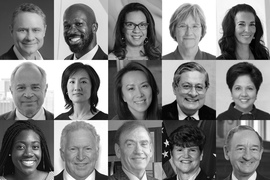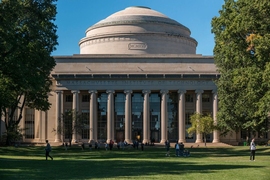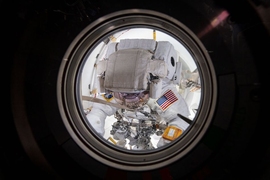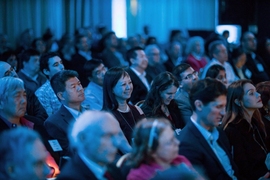On July 1, Charlene C. (Nohara) Kabcenell ’79 began her one-year term as president of the MIT Alumni Association. She joins President-Select Annalisa L. Weigel ’94, ’95, SM ’00, PhD ’02 and a slate of new directors for 2020-21.
A Hawaii native, Kabcenell has lived in California with her husband, Derry Kabcenell ’75, since she graduated from MIT with degree in electrical engineering and computer science. She began her career at Xerox and retired from Oracle as a vice president of software development. A life member of the MIT Corporation, she has served on various committees for both the Corporation and the Alumni Association.
Q: What aspect of volunteering for MIT do you find most rewarding?
A: I feel good about being able to connect other alumni back to MIT. When I retired from my career in the late ’90s, my husband and I hadn’t been to campus since our school days. Volunteering for MIT was an opportunity to find out what was going on there. It hit us then — we’d been missing out on so much. And naturally I couldn’t contain myself from telling alumni back home, “Did you know about this great project?” Often, it was something an alum might not know that MIT was involved in, such as addressing global poverty.
Q: What will you focus on during your year as president?
A: My predecessors did a terrific job refreshing and strengthening the association. My role is to keep the momentum going. The Covid-19 crisis has reminded us all of the importance of relationships and staying connected, both to MIT and to each other. I plan to focus on building and improving that connectivity, whether in person or virtually as we must do during social distancing, because we are such a force when we band together. The way we used to support each other as students, in getting through classes and whatnot — we can do the same now that we’re out in the world.
I also want to take advantage of our shared value of making a better world. “Mind, hand, and heart” has always been part of our MIT DNA, and working together to improve the world around us is a natural fit for our alumni community. Our collective response to the challenges of Covid-19 is evidence of that, and the association can do even more to inspire and facilitate those kinds of efforts.
In many ways, this ties to the work the MITAA Board of Directors has been doing with staff and volunteers to implement key tenets of the strategic plan we created in 2018, with special focus on activating our alumni network in service to the world — as well as to our local communities.
Q: What did the MIT community mean to you as a student?
A: I don’t know who the nice people in the admissions office were who let me in, but I really feel like I was a long shot. I attended a public high school not known for academic excellence, where I was a nerd who just didn’t fit in. I was also a first-generation student. I arrived here knowing that I was not as well prepared as my fellow students.
Once I arrived at MIT, it was this big revelation: “There are other people like me! We speak the same language.” There were so many people here who shared those common values of love of learning and wanting to discover things and solve problems. In that sense, I think of MIT as my second home, certainly my intellectual home.
Q: Do you have a favorite spot on campus?
A: The first time I walked up the steps to Lobby 7, I thought, “Wow! I can see the wear from generations of feet!” Later I found out that some of the original stones have been replaced, so perhaps it’s not quite generations of wear. But I still get that little thrill, remembering the first time going to class up those steps and saying, “I’m really here.”
This article originally appeared in the July/August 2020 issue of MIT Technology Review.
![Charlene (Nohara) Kabcenell ’79 is president of the MIT Alumni Association. "The Covid-19 crisis has reminded us all of the importance of relationships and staying connected, both to MIT and to each other," she says. "[W]e are such a force when we band together."](/sites/default/files/styles/news_article__image_gallery/public/images/202007/Slice_202006_Kabcenell5281_Final.jpg?itok=B_-ZgI6U)









